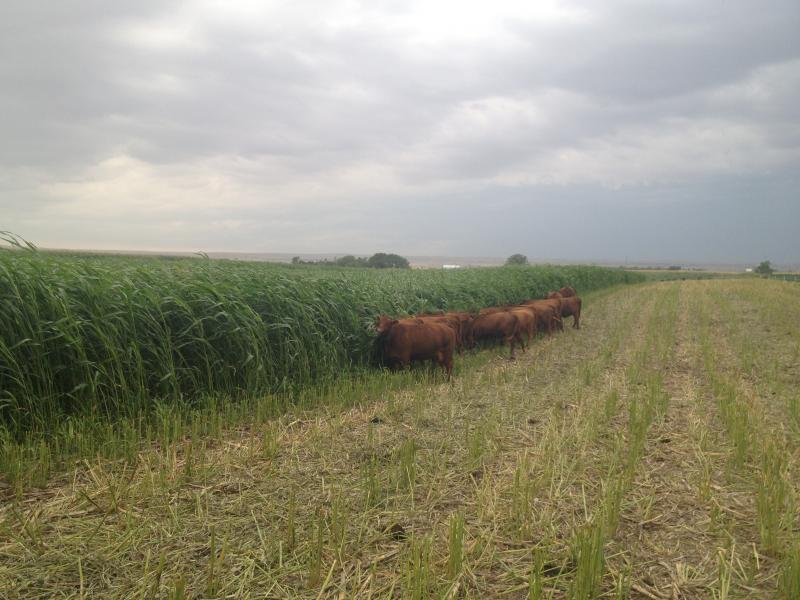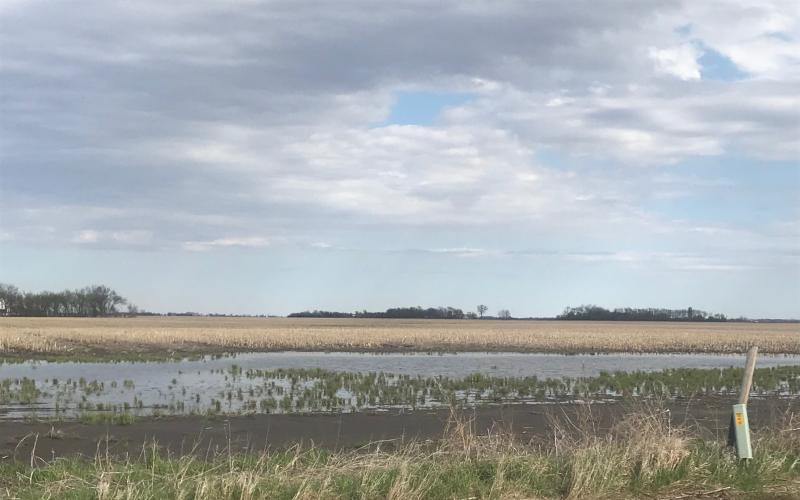
Written collaboratively by Ruth Beck, former SDSU Extension Agronomy Field Specialist, Warren Rusche, Assistant Professor SDSU Extension Feedlot Specialist and Sara Bauder SDSU Extension Agronomy Field Specialist.
With the excessively wet planting conditions much of South Dakota is now experiencing, many producers are looking for “Plan B” to meet forage needs for their livestock, or as a commodity that can be marketed to livestock producers.
Even for producers who may not own livestock, a forage crop can still hold economic potential. Harvesting forage or leasing grazing acres to neighbors who own livestock provides a way to create revenue on fields that may have otherwise been fallow or weedy this year.
Several factors should be considered before committing to a forage crop. Pay special attention to prior crop history as some herbicides can affect subsequent crops; you need to make certain that this year’s “Plan B” is compatible with last year’s production practices. Another important factor is soil fertility. Be cautious with applying high levels of nitrogen fertilizer to a planned forage crop, especially with cool season small grains such as oats. High levels of soil nitrogen often lead to excessive nitrate accumulation in the forage. Finally, make certain to consult crop insurance regulations surrounding prevent plant coverage, yield history, and harvest or use of emergency forage crops. As tight as margins are this year, the impact of every decision on the entire farm business needs to be evaluated.
Alternative Forage Options
Cover Crop Mixtures
Cover crops offer a unique opportunity to mitigate risk from environmental conditions. Combinations of different species increase the odds producing a useful forage crop, either to be grazed, hayed, or ensiled. Resources are available at NRCS South Dakota Cover Crops website. Additionally, the NRCS Cover Crop Excel Worksheet (Additional Resources tab) provides information for producers to custom tailor a mix for their specific situation.
Hay Millets
As the name implies, these crops are best suited to be harvested as hay rather than grazed or cut for silage. These plants have finest stems and cure the easiest compared to other summer annuals. Hay millet is most drought-tolerant and can produce forage in as little as 8 weeks after planting.
Pearl Millet
Pearl millet offers more production potential than do the hay millets. Pearl millet has the ability to re-grow, making it a better option for grazing or for multiple cuttings at any growth stage. Pearl millet has coarser stems than hay millet, making curing for baled hay more challenging. Unlike sudangrass, sorghum-sudangrass and forage sorghum, pearl millet doesn’t accumulate prussic acid, which means that cattle wouldn’t have to be temporarily removed because of an early frost.
Sudangrass and Sorghum-Sudangrass Hybrids
Because of the thicker stems for these crops, they are much better suited to be harvested as silage compared to hay. These also work well as supplemental summer grazing. Prussic acid can be a concern when grazed. The greatest risk for prussic acid poisoning occurs under drought conditions, when plants are damaged by frost, or when livestock graze short regrowth. To minimize risk, defer grazing until sudangrass is 18 to 20 inches tall and sorghum-sudangrass hybrids reach 24 to 30 inches. Remove livestock for 5 to 6 days if these plants are damaged by a killing frost so that the plants can dry out and the prussic acid can dissipate.
Forage Sorghum
This crop is the latest maturing and has the most production potential. Forage sorghum is best suited for silage production. Prussic acid can also be a concern in forage sorghum under similar conditions as sudangrass and sorghum-sudangrass hybrids.
Other Storable Forages
Other popular forage options include oat/pea mixture or other grass/legume mixes. The legumes in such mixes provides protein to the mix at first cutting, but can also add to seed cost and should be weighed against the cost of other protein supplements. Several other additional combinations of storable forages are available, but producers should take cost: benefit ratios into account before making decisions.
Additional Information
In order to serve a dual purpose of improving and protecting soil health, while providing high quality livestock feed, we suggest the ‘take ½ leave ½’ approach in which livestock are allowed to graze approximately 50% of the above ground plant matter before being moved to the next paddock or pasture. This allows the trampled or ungrazed portions of the field to provide cover, nutrient cycling, and carbon for the field.
For producers seeking additional grazing opportunities or those who seek producers with cattle to graze their acres see the South Dakota Grazing Exchange website, which offers tools to connect livestock producers with forages. Grazing and feeding restrictions from any previous herbicide applications should be considered before planting a cover crop for grazing.
Resources
- S.D. Cover Crop Worksheet and Mix Suggestions
- Selecting Cover Crops in South Dakota
- S.D. Grazing Exchange Website
- Multi-Peril Crop Insurance Article
- SDSU Extension Feed & Forage Finder
References
- Ball, D.M., C.S. Hoveland, and G.D. Lacefield. Editor: G. Sulewski. Forage Crop Pocket Guide. Reference #16069. 13th Printing. International Plant Nutrition Institute (IPNI). 2016.
- Sulc, Marc. Supplemental forage Options For Early Summer Planting. The Ohio State University. 2015.

